See the best animal photos of 2018
Get up close to a shark feeding frenzy and meat-eating bats in these amazing pictures selected by National Geographic editors.
Dozens of reef sharks hunt for prey in the depths of the South Pacific, and two pumas stand atop a Chilean cliff. To capture these shots and others, National Geographic photographers climbed high and dove deep this year—sometimes without protection. It’s tough to get a spontaneous shot of a shark feeding frenzy from within a cage.
Even after more than 100 years of photographing the natural world for National Geographic, our wildlife photographers are still capturing animals in ways they’ve never been seen before. Evgenia Arbugaeva spent time in Indonesia, capturing vivid photographs of the dark side of the butterfly trade, and Anand Verma ventured into an ancient Maya temple to photograph meat-eating bats.
Follow Photos The best animal photos of 2018
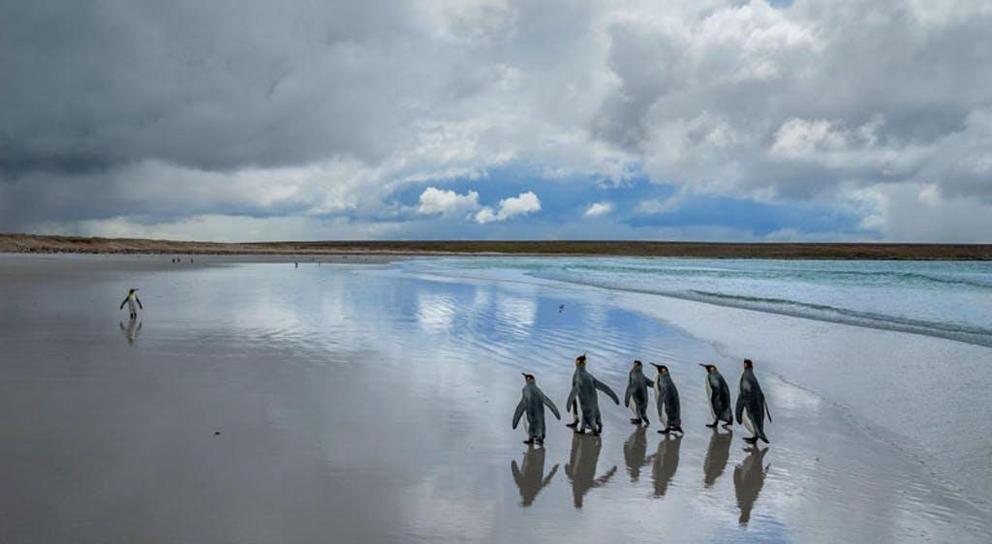
King penguins stroll on the white sand of Volunteer Point on East Falkland island. Small numbers were seen in the islands in the 1860s, but in the 1970s the population began to increase steadily. A thousand breeding pairs now frequent the beach, which became a private reserve 50 years ago.
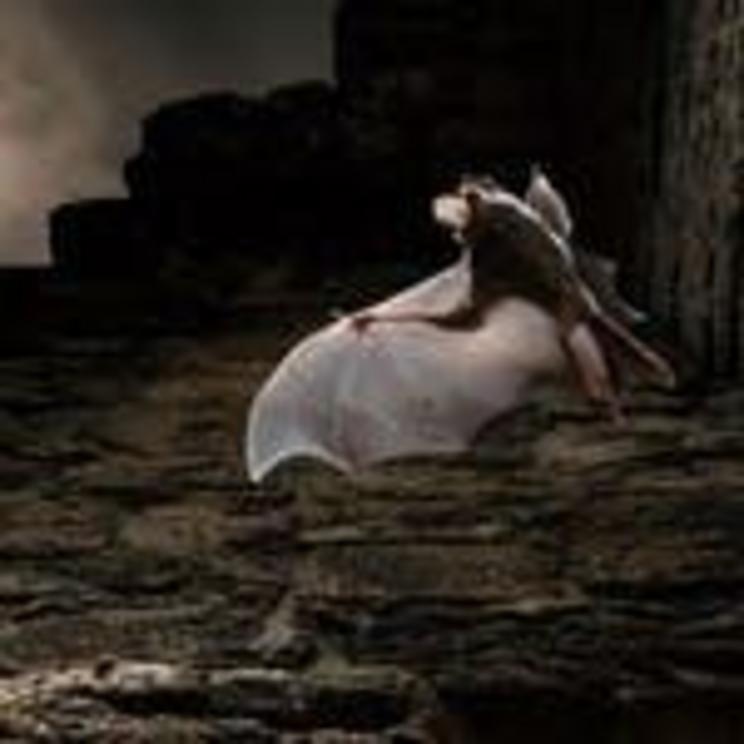
A woolly false vampire bat flaps into a moonlit night. The mission: Get dinner. For rodents and other small creatures of Mexico’s Yucatán Peninsula, the night is an especially dangerous time, as meat-eating bats leave their roosts seeking prey.
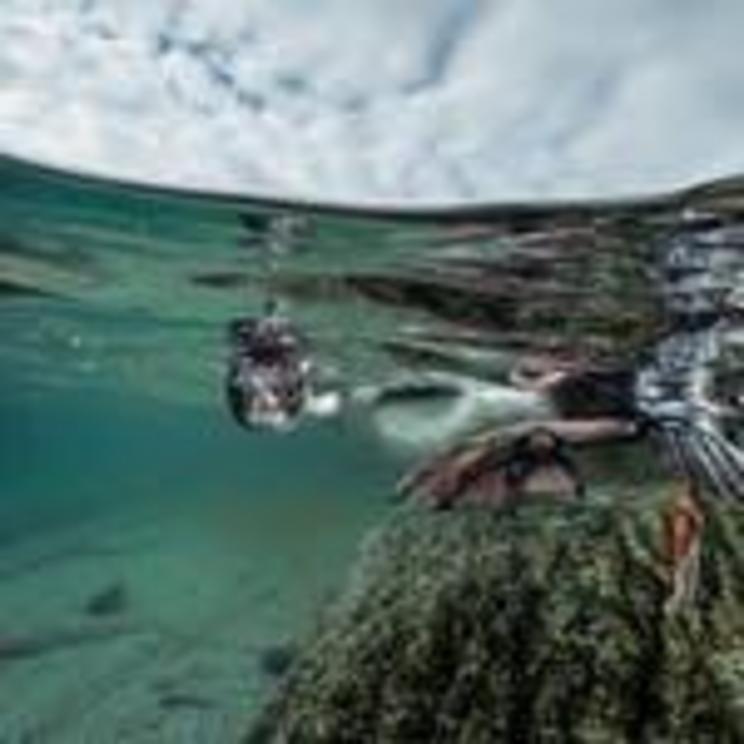
A young blue-eyed shag attempts what may be its first dive near shore. Many flying seabirds nest or feed along the Antarctic Peninsula.

Arnie, a European starling, lives with Lloyd and Rose Buck in Somerset, where he chatters in English and is happiest when Lloyd is playing the piano. There seems to be something about classical music that appeals to starlings: Mozart had a pet starling who sang some of his music. Arnie likes Mozart, Beethoven, Schubert, and Bach.
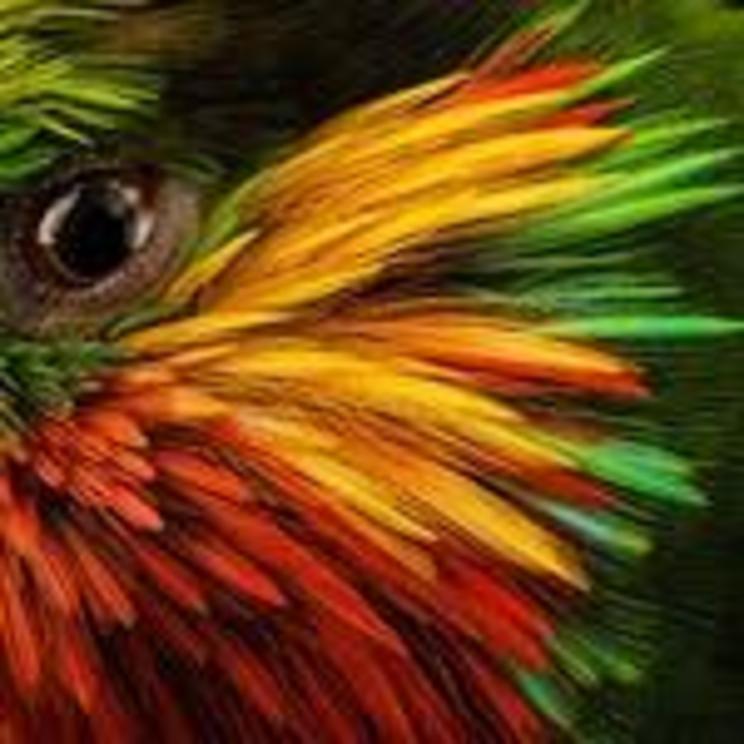
Brushstrokes of bold colour frame the eye of an Edwards’s fig parrot—which, as its name suggests, eats figs (as well as other fruits, nectar, and possibly insects). The striking forest dweller is also comfortable living near human settlements in Indonesia and Papua New Guinea.

Ellie, a northern goshawk owned by Lloyd and Rose Buck in England, tucks in her wings and streaks through narrow openings at high speed. Aeronautics scientists say the fierce predators assess the density of the trees and intuit how fast they can fly—ensuring that they’ll find openings and not crash.
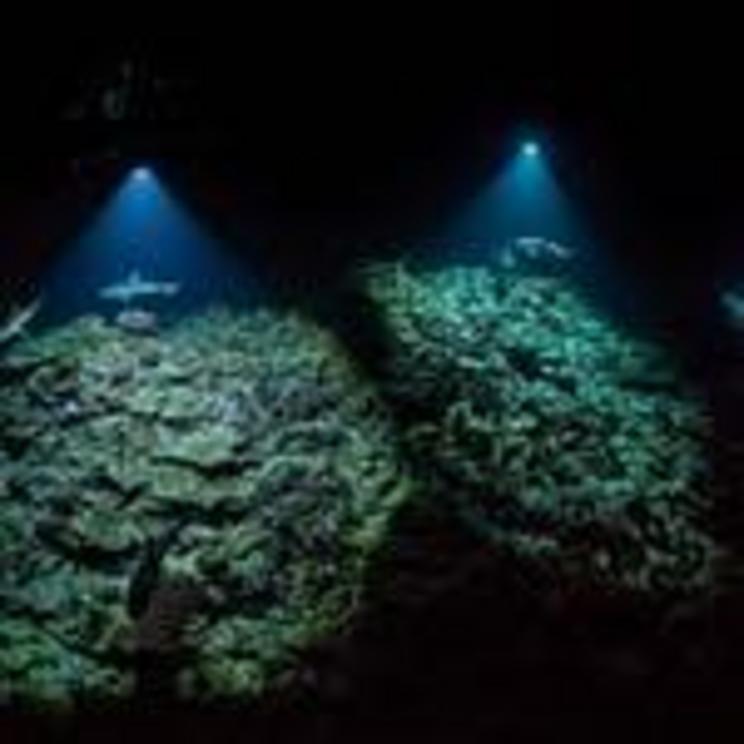
On a nearly moonless night at Fakarava in French Polynesia, members of photographer Laurent Ballesta’s team, swimming against the tidal current, hold the powerful lights he needs to photograph sharks as they hunt for groupers hiding in the reef.

After training in the desert, falcons are tied to perches for the drive back to Dubai. The birds’ vision is so acute that subtle movements or changes in light can startle them. Hooding, a technique developed by ancient Arabs, keeps them calm.
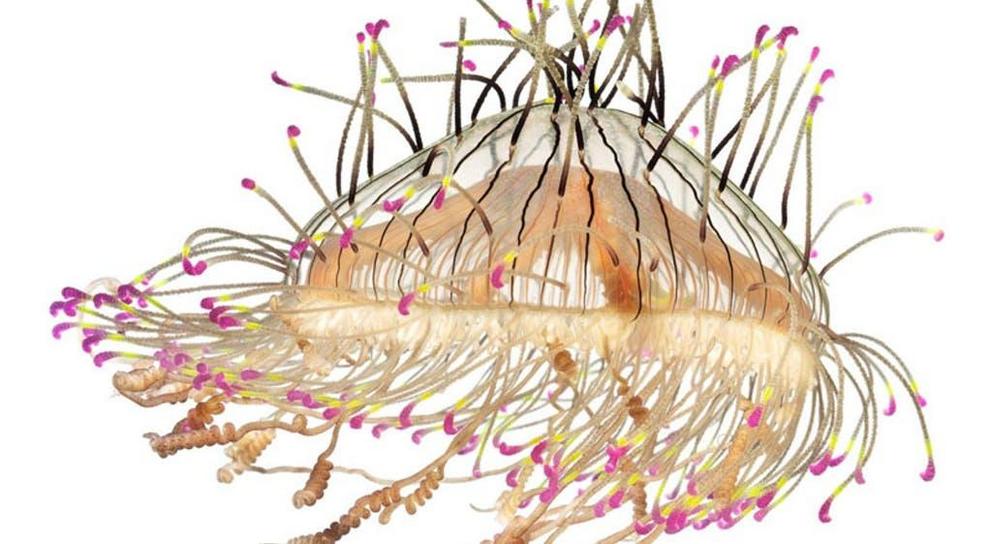
Flower hat jellies exemplify the paradox of the medusas, or bell-shaped jellyfish: They’re both delicate and menacing. Sitting on the seafloor, waving colourful tentacles, they lure fish, sting them, and eat them.
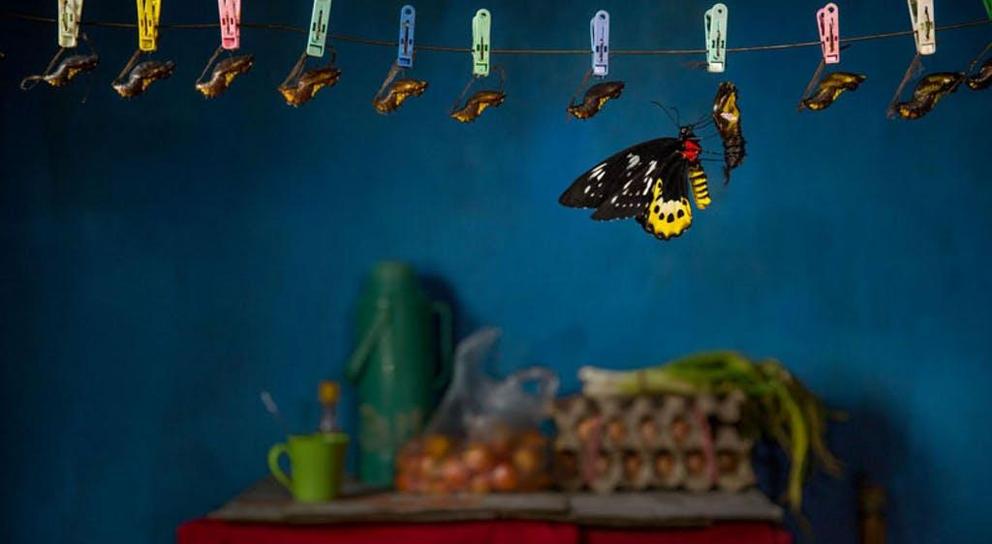
A goliath birdwing hatches in the kitchen of a tourist house in West Papua, Indonesia. Hatchlings are killed young, to preserve their wings. The trade in rare butterflies— both legal and illegal— spans the planet, from catchers to middlemen to collectors.

The sun rises in Wyoming on male sage grouse strutting their stuff, chests puffed, tails splayed. Their courting arenas, or leks, are clearings in the sagebrush.
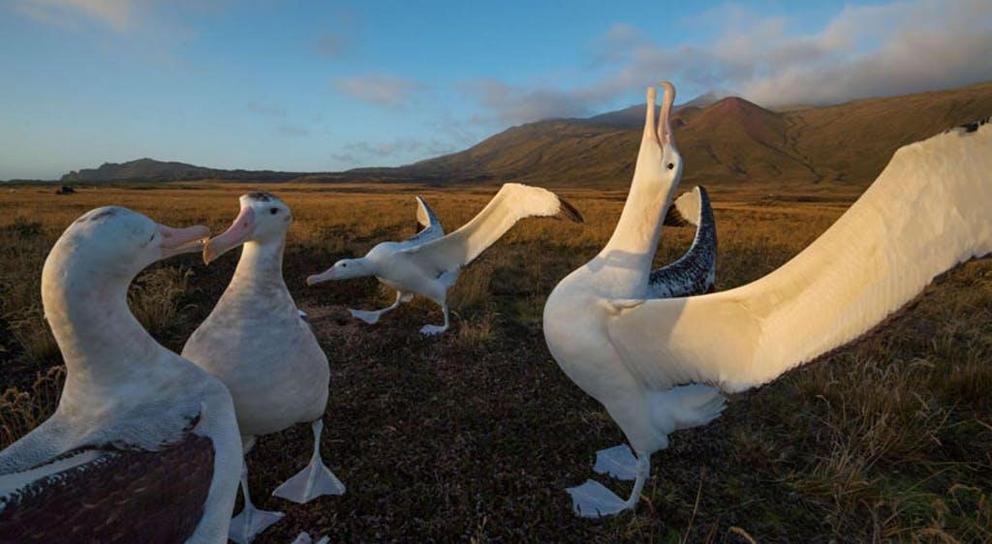
As the sun sets on Marion Island’s western shore, a quartet of wandering albatrosses breaks out in the species’ ritual dance, a complex suite of calls and gestures, including a “sky calling” display from the bird at right. Wandering albatrosses mate for life, and the dancing behaviour, typically performed by subadults, helps individuals size up prospective partners.

A female saker falcon guards her chicks—called eyases—in their nest overlooking the Mongolian plain. Genghis Khan is said to have kept hundreds of the birds for hunting. Today sakers are considered endangered because of habitat loss and the illegal wildlife trade.

A young male lion was one of three members of Kenya’s famous Marsh Pride to die in 2015 after eating a cow carcass that Maasai herders had laced with carbosulfan, an insecticide. The lions had killed several cows.

Moon jellies, found all over the world, are named for their otherworldly, translucent bells. The fringe of hairlike cilia sweeps food—mostly plankton—toward their mouths. The jellies change colour depending on what they eat.
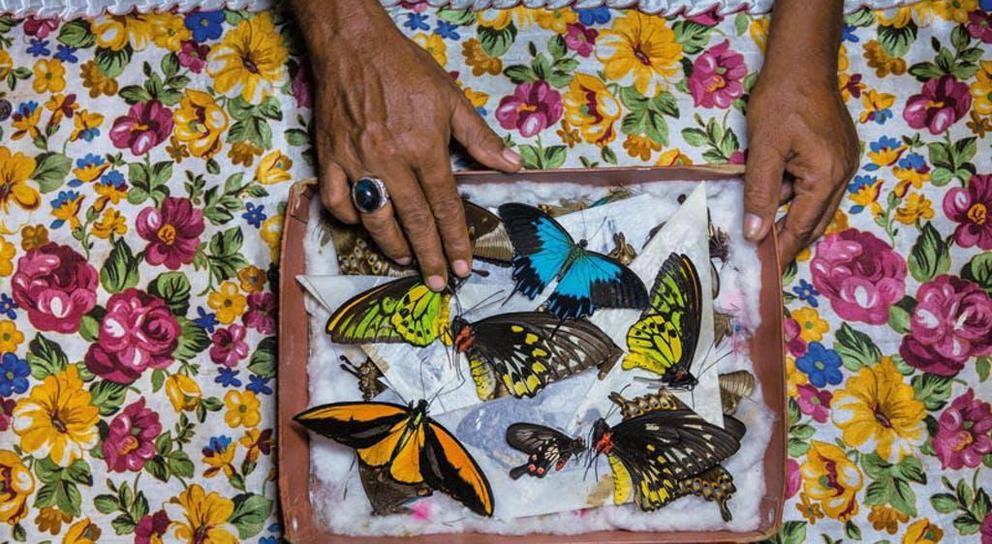
A butterfly catcher on Bacan island, Indonesia, sorts his specimens, which he’ll sell in Bali. From there the butterflies are exported throughout Asia and on to collectors worldwide.
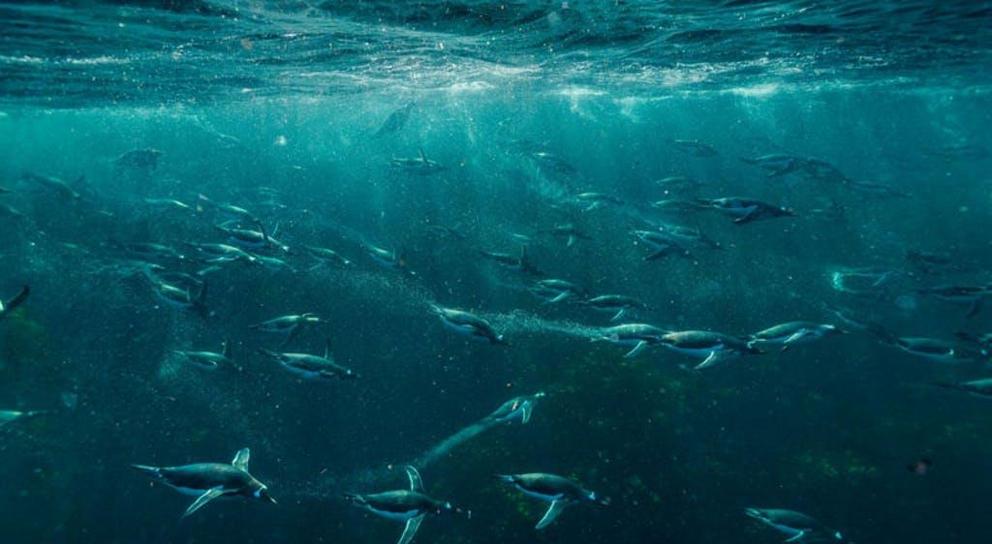
Gentoo penguins swim at the fastest speed clocked for a bird: 35 kilometres an hour. They’ll spend the entire day hunting in the ocean, generally close to shore, and trying not to be hunted by seals, sea lions, and orcas. The Falkland Islands shelter the most gentoo breeding pairs in the world.
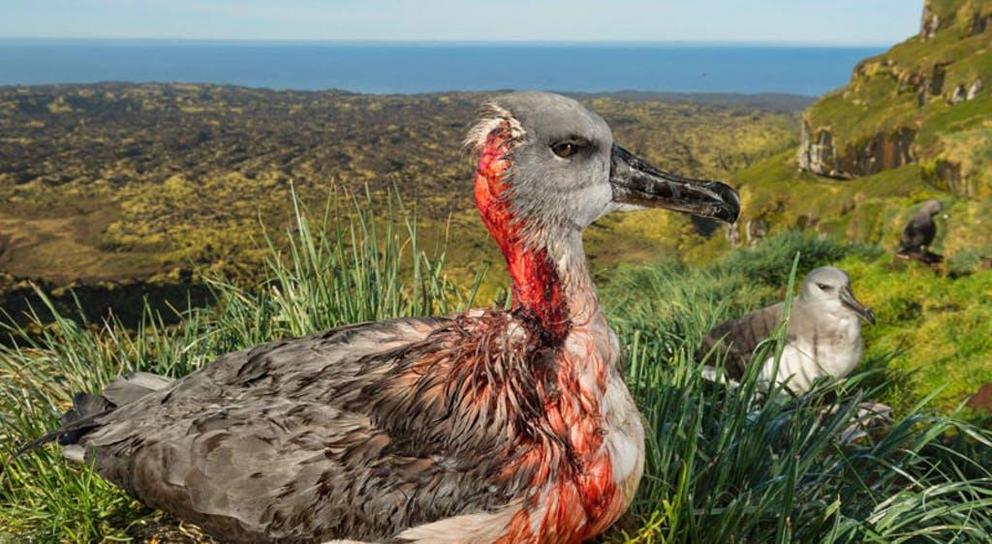
A scalped grey-headed albatross chick on sub-Antarctic Marion Island gruesomely conveys the threat seabirds face from invasive species. For reasons not entirely understood, mice brought to the island by humans 200 years ago have begun feeding on birds at night. With no instinctual fear of this new danger, a bird will sit passively while mice nibble into its flesh, until it succumbs.

In New Zealand's Chatham Islands, the most sheltered nesting site for albatrosses is a natural cave high up on Te Tara Koi Koia. Inside, nests protected from erosion from wind and rain form pedestals tall as top hats. The downy grey chicks will fledge in five months’ time.

During an all-day courtship, Charqueado (at left), a four-year-old puma, pursues a female, gnashing his teeth and grunting. He mated with her five times over an hour and in a relatively exposed spot, according to photographer Ingo Arndt. Then, rather than retreating to safety, the pair strolled onto this promontory on private ranchland near Torres del Paine National Park.

Crabeater seals slither onto floating ice to nap, give birth, or hide from killer whales or leopard seals. (Note the prominent scars.) With less sea ice available off the Antarctic Peninsula, icebergs like this one, calved from glaciers on land, provide critical resting places for animals. Despite their name, crabeaters feed mostly on shrimplike krill— another Antarctic staple whose future is in doubt.

Southern rockhopper penguins must navigate the rocky cliffs and crashing waves when coming to and from Marion Island.
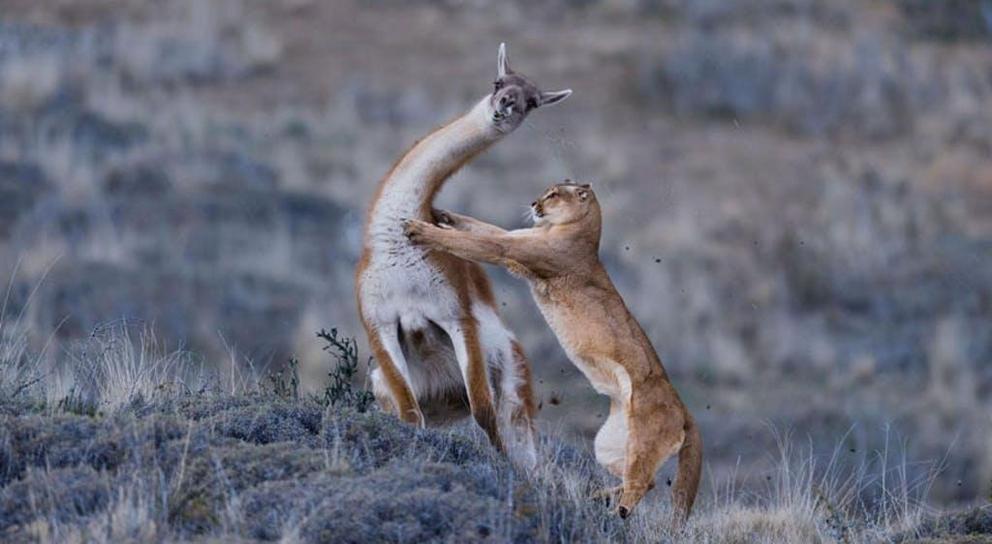
After lying in wait behind a wall of shrubs for an hour—then stalking her prey over a hundred yards of rough grassland for another half hour— puma Sarmiento leaps upon a guanaco. A strong and mature male, he moves sideways, escaping his sharpclawed foe.

Conservationists hold a sickened grey heron and birds that died after aerial spraying of the pesticide fenthion in Kenya's Bunyala rice-growing area. Villagers collect and eat the birds, even though they’re poisoned.

An Asian elephant peers through foliage in Bangladesh’s Inani forest, on the edge of the largest refugee camp in the world. The elephant is one of 38 trapped in the forest adjacent to the camp, which blocks elephants’ migration routes.

Pincushion shrubs and shards of rock don’t trouble the puma known as Sarmiento, at centre, or her 11-month-old cubs, huddled up at the end of a winter’s day above Lake Sarmiento, near Chile’s Torres del Paine National Park. The matriarch, who has raised several generations of cubs, spends most of her time hunting— and napping—along this waterfront.

A sun star clings to tree kelp in the chilly South Atlantic off the coast of Bird Island in what looks like an underwater rain forest. The ridges that form the Falklands force nutrients up from the deep, creating a rich marine world that attracts all manner of fish, mammals, and birds.
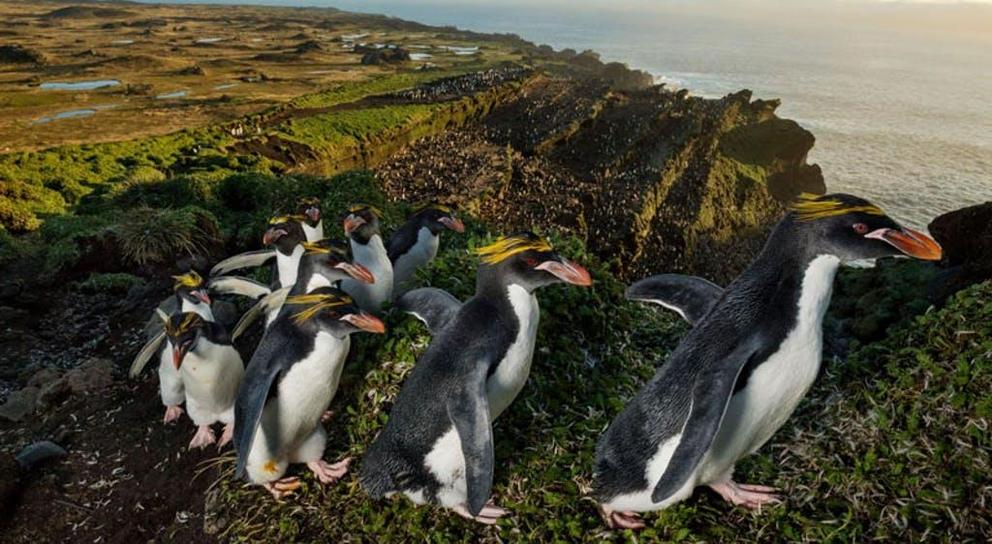
Coats fresh from moulting, a column of macaroni penguins trudges up the ridge of an old volcano crater on sub-Antarctic Marion Island. Behind them is “the Amphitheatre,” a series of terraces in the crater worn down over eons by nesting and moulting macaronis. “The sound of all the penguins reverberating from this multitiered half crater is really impressive,” says ecologist Otto Whitehead.

Steeple Jason, one of the more remote islands in the Falkland Islands, hosts the world’s largest colony of black-browed albatrosses. Once used to graze hundreds of sheep and cattle, it’s now a nature reserve. About 70 percent of the black-browed albatross population nests in the Falklands.
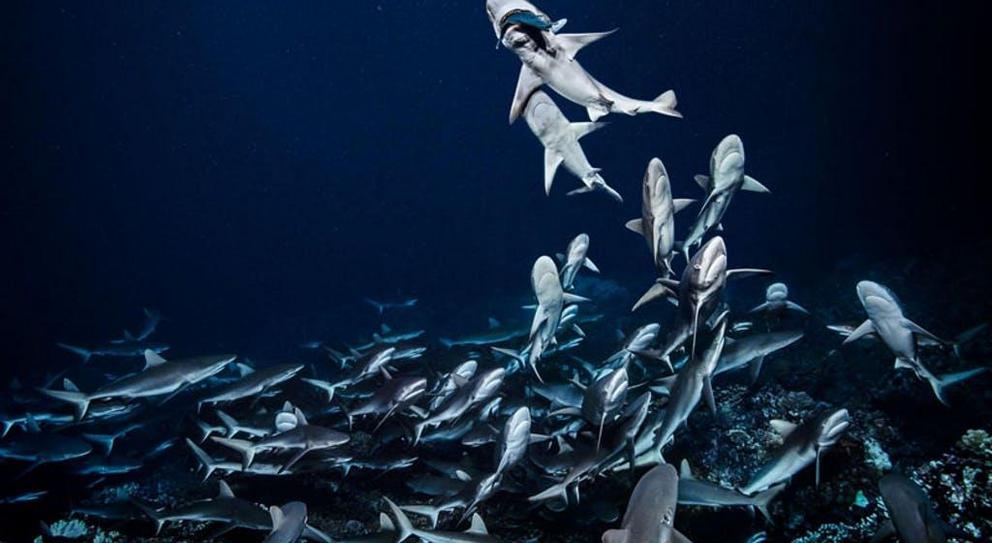 LAURENT BALLESTA
LAURENT BALLESTA
At night grey reef sharks hunt as a pack in the south channel of Fakarava Atoll, in the Tuamotu Archipelago in French Polynesia. Photographer Laurent Ballesta’s team, diving without cages or weapons, counted 700 sharks.
Some of our best wildlife photos this year were of birds. To mark the 100th anniversary of the Migratory Bird Treaty Act, which protected a huge swath of bird species from being killed, National Geographic declared 2018 the Year of the Bird and set out to tell stories about all things avian.
We focused on birds in peril, like the albatrosses of sub-Antarctic Marion Island, photographed bloody and half-alive by Thomas Peschak. Our photography also showed the birds that are flourishing against the odds, like the shearwaters and penguins sheltered on the Falkland Islands in the South Atlantic, captured by Paul Nicklen.
Charlie Hamilton James photographed birds at their smartest, quirkiest, and most cunning, like a Mozart-loving European starling named Arnie. He also celebrated snagging the most difficult shot of his entire career: a funny American bird called a sage grouse, which he finally captured one freezing-cold dawn as a vast Wyoming valley turned golden. “It took five weeks, a lot of coffee, and a pile of gear,” Hamilton James says.
For full references please use source link below.
